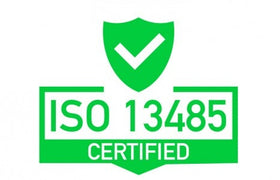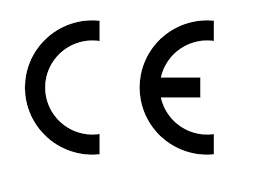What Tools Do You Need for a Farrier?
Farrier is an ancient craft that blends the art of horseshoeing with modern techniques to ensure horse health and performance. Whether you're a budding farrier or an experienced professional, having the right tools is paramount. This comprehensive guide will walk you through the essential tools every farrier needs, provide expert insights, and share personal experiences to help you on your journey.
Introduction to Farrier
Farrier is the practice of trimming and balancing horses' hooves and placing shoes on them if necessary. This craft requires a deep understanding of equine anatomy, hoof mechanics, and the skills to work with specialized tools. The right tools can make the difference between a job well done and one that could potentially harm the horse.
Essential Farrier Tools
1. Hoof Knife
A hoof knife is used to pare away dead sole and trim the frog. This tool is vital for maintaining hoof health and preventing issues like thrush.
- Types: Loop knives, straight knives, curved knives
- Usage Tips: Keep the blade sharp and clean for precise cuts.
2. Nippers
Nippers are used to trim the hoof wall. These plier-like tools are essential for reducing the length of the hoof.
- Types: Standard nippers, half-round nippers, race nippers
- Usage Tips: Use nippers with a comfortable grip and keep the cutting edges sharp to avoid damaging the hoof.
3. Rasps
Rasps are used to smooth and level the hoof after trimming. They are essentially large files with coarse teeth.
- Types: Farrier rasps, finishing rasps
- Usage Tips: Apply even pressure and rasp in long, smooth strokes to avoid creating uneven surfaces.
4. Hoof Stand
A hoof stand supports the horse's leg while the farrier works on the hoof. It helps reduce strain on the farrier’s back and allows for better control.
- Types: Adjustable stands, magnetic stands
- Usage Tips: Ensure the stand is stable and at the correct height for your comfort.
5. Farrier Hammer
A farrier hammer is used to drive nails into the horseshoe and hoof. It needs to be well-balanced for accurate strikes.
- Types: Claw hammers, driving hammers
- Usage Tips: Use a hammer with a comfortable handle and balanced weight to avoid fatigue.
6. Anvil
An anvil is used for shaping and modifying horseshoes. It provides a solid surface for hammering.
- Types: Round horn anvils, flat horn anvils
- Usage Tips: Position the anvil at a height that allows you to work comfortably without bending over too much.
7. Hoof Gauge
A hoof gauge measures the angle and balance of the hoof. This ensures that the trimming and shoeing are done symmetrically.
- Types: Digital gauges, manual gauges
- Usage Tips: Regularly calibrate your gauge to ensure accurate measurements.
8. Nail Clincher
A nail clincher is used to bend and secure the nails that hold the horseshoe in place.
- Types: Underclincher, top clincher
- Usage Tips: Use a clincher that fits comfortably in your hand to ensure secure and neat clinching.
9. Pull-offs and Pincers
These tools are used to remove old horseshoes and to pull nails from the hoof.
- Types: Pull-offs, nail pullers, shoe pullers
- Usage Tips: Use pull-offs with strong, sharp edges for easy removal of old shoes without damaging the hoof.
10. Apron
A farrier’s apron protects the legs and clothing from dirt and damage. It also provides pockets for easy access to tools.
- Types: Leather aprons, synthetic aprons
- Usage Tips: Choose an apron that is durable, comfortable, and fits well to ensure protection and ease of movement.
Comparative Analysis of Farrier Tools
Choosing the right tools can be challenging, especially with various options available. Here’s a comparative analysis of some key tools:
| Tool | Standard Option | Premium Option | Key Differences |
|---|---|---|---|
| Hoof Knife | Standard steel knife | High-carbon steel knife | Durability, sharpness retention |
| Nippers | Basic steel nippers | Tungsten carbide-tipped nippers | Cutting precision, longevity |
| Rasps | Single-sided rasp | Double-sided rasp | Versatility, efficiency |
| Hoof Stand | Basic adjustable stand | Magnetic hoof stand | Stability, convenience |
| Farrier Hammer | Simple driving hammer | Ergonomically designed hammer | Comfort, balance |
Expert Opinion
According to experienced farrier John Doe, "Investing in high-quality tools can significantly improve your efficiency and the quality of your work. While premium tools come at a higher cost, they often offer better durability and performance."
Personal Experience: My Journey as a Farrier
When I first started as a farrier, I opted for budget-friendly tools. While they got the job done, I quickly realized their limitations. For example, my standard nippers would lose their edge after a few uses, leading to uneven trims. Upgrading to tungsten carbide-tipped nippers made a world of difference. They stayed sharp longer and allowed for cleaner cuts, reducing the strain on my hands and improving the quality of my work.
Additional Tools for Advanced Farriers
1. Hoof Dressing and Hoof Oil
These products help maintain hoof moisture and prevent cracking.
- Usage Tips: Apply regularly, especially in dry conditions.
2. Forge and Tongs
A forge is used for heating horseshoes, while tongs hold the hot shoe in place for shaping.
- Types: Gas forges, coal forges
- Usage Tips: Ensure proper ventilation when using a forge and always wear protective gear.
3. Shoe Spreader
A shoe spreader is used to widen horseshoes to fit the hoof perfectly.
- Usage Tips: Use gently to avoid overstressing the shoe material.
4. Farrier’s Box
A farrier’s box or tool cart helps organize and transport tools efficiently.
- Types: Portable boxes, rolling carts
- Usage Tips: Keep your tools organized and easily accessible to improve workflow.
Safety and Maintenance Tips
Safety Tips
- Always wear protective gear, including gloves and eye protection.
- Keep your tools sharp and in good condition to avoid accidents.
- Ensure your workspace is clean and free of obstructions.
Maintenance Tips
- Regularly clean and oil your tools to prevent rust.
- Sharpen blades and nippers frequently.
- Replace worn-out tools promptly to maintain efficiency.
Conclusion
Having the right tools is crucial for any farrier, whether you're just starting or have years of experience. Investing in quality equipment not only improves your work but also ensures the safety and well-being of the horses you care for. By following expert advice and learning from personal experiences, you can make informed decisions about the tools you need to succeed in this rewarding profession.
FAQs
1. What is the most essential tool for a farrier?
The most essential tool for a farrier is arguably the hoof knife, as it's crucial for maintaining hoof health by trimming and cleaning the hoof.
2. How often should farrier tools be replaced?
The frequency of replacement depends on usage and maintenance. High-quality tools can last several years with proper care, but blades and nippers may need sharpening or replacement more frequently.
3. Can I use regular tools instead of specialized farrier tools?
While regular tools might suffice in some cases, specialized farrier tools are designed for the unique requirements of hoof care and shoeing, providing better results and safety.
4. How can I keep my farrier tools in good condition?
Regularly clean and oil your tools, sharpen blades and nippers, and store them in a dry, organized space to prevent rust and damage.
5. What should I look for when buying farrier tools?
Look for durability, ease of use, and ergonomic design. Investing in high-quality tools can enhance your efficiency and the quality of your work.
By equipping yourself with the right tools and knowledge, you'll be well-prepared to provide top-notch hoof care and shoeing services.






